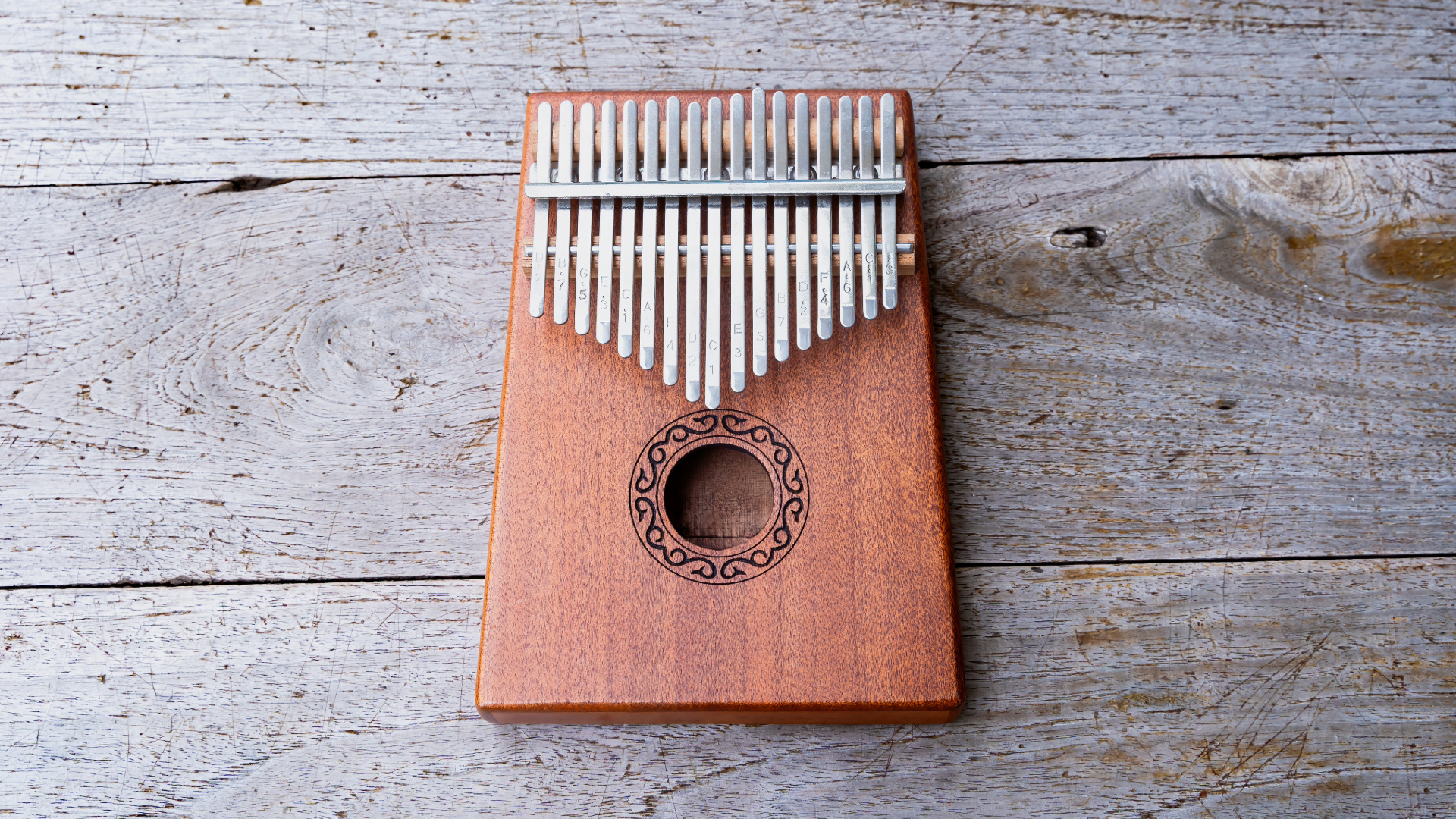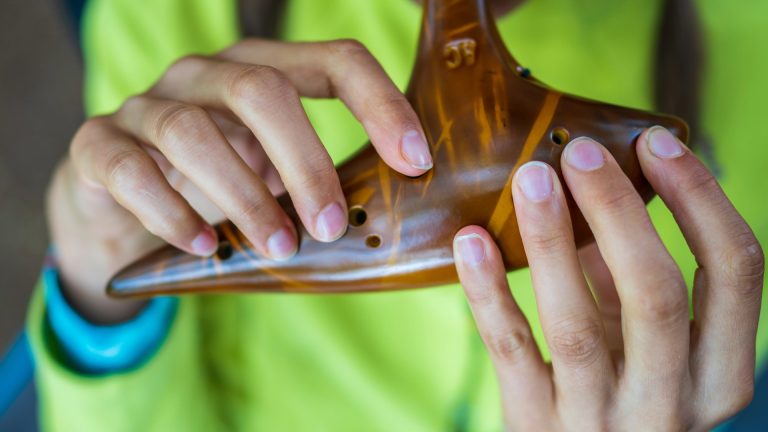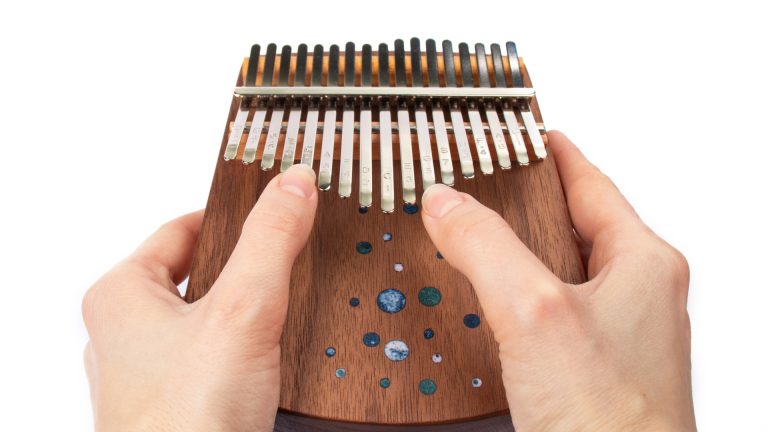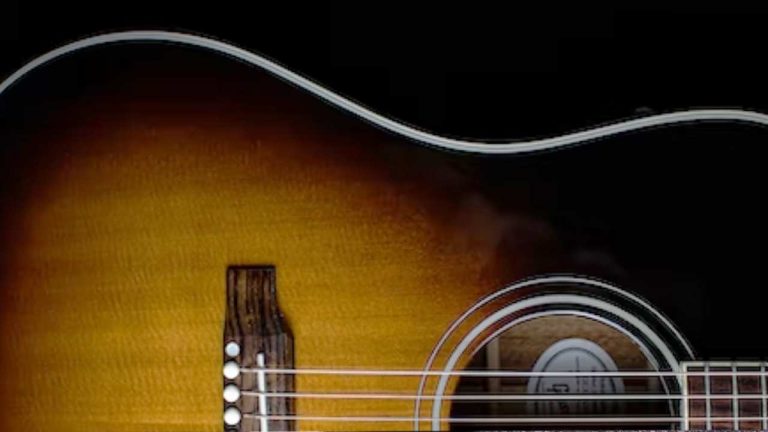What is the Best Kalimba for Beginners: Top Picks for New Players
Folkstrings.com is reader-supported. When you buy through links on our site, we may earn a small commission.
When choosing a kalimba, beginners are often faced with a myriad of options, but not all kalimbas are created equal, especially for those just starting out.
The kalimba, an African thumb piano, has a distinctive melodic twang and is played by plucking metal tines with the thumbs. It’s become increasingly popular due to its soothing tones and relatively simple learning curve.
For beginners, the best kalimba is one that balances quality, tone, and ease of use without overwhelming the new player.
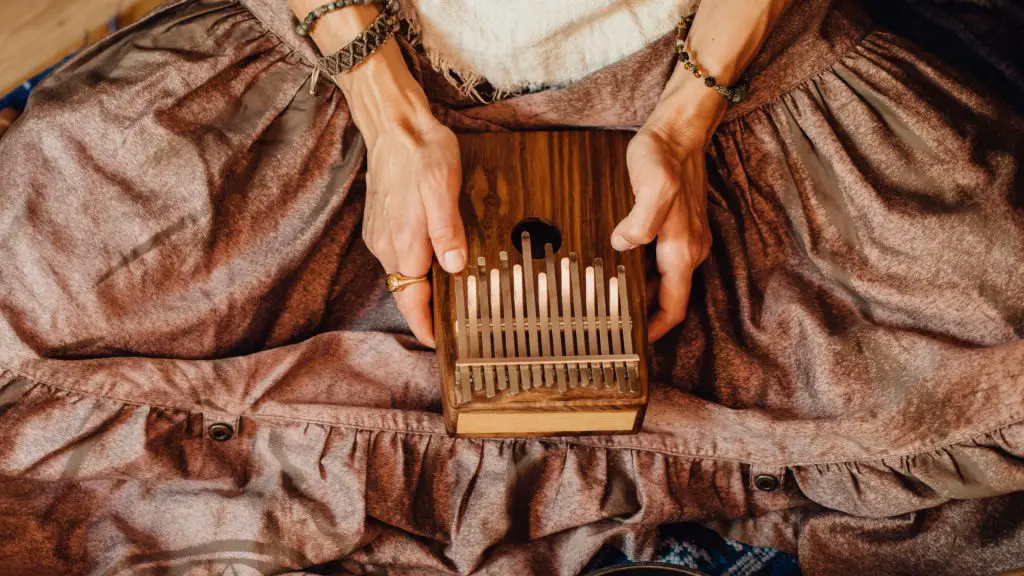
As someone who has explored various musical instruments, I find that for newcomers, a kalimba with clear, resonant tones and a compact, user-friendly design is most beneficial.
Many starter kalimbas come in a 17-tine setup, which is ideal for learning the fundamentals without being too limited in the range of music you can play.
Selecting a model from a reputable brand with pre-tuned tines can save time and allow you to start playing right off the bat.
Additionally, looking for a kalimba made with high-quality wood like mahogany or acacia can enhance sound quality and make the playing experience more enjoyable for a beginner.
Key Points…
- The ideal beginner kalimba has a good balance of quality, tone, and playability, often featuring a 17-tine design.
- High-quality materials and pre-tuning are essential for ease of use and a pleasant learning experience.
- Starting with the right kalimba and accessories sets beginners on a successful journey into making music.
Table of Contents
What is the Best Kalimba for Beginners: My Top 3 Picks
When I began exploring the world of kalimbas, I uncovered three top picks that are excellent for beginners. These choices strike a balance between affordability, sound quality, and ease of use.

- Wonderful Sound: This Solid Curly Maple Thumb Piano has very nice and clear sounds, this one has a bit longer resonance so when you play it you'll feel sound is more continuous.
- Easy to play: Thumb Piano is tuned and tested well before shipment .it adopts international standard C tone
- Study Guidance: Comes with a professionally produced kalimba learning booklet, it introduces the use and performance method of kalimba in detail.
- After-sales Service: 365 days warranty, 45 days unconditional return guarantee. If you have any questions or demanding advice on musical instruments, please feel free to contact us.

- Selected acacia koa wood and ore metal tines to make sure the kalimba produces a warm and deep sound.
- High-gloss piano lacquer finishing.
- Music scales engraved on the keys for easy starting, tremolo chain included to provide an interesting jingle effect, professional PU Leather Hard Case included for protecting, easy carrying and storage.

- Very easy to learn: The Unokki 17 Key Kalimba is perfect for both adults and kids. It has simple instructions provided, so you can easily begin playing and enjoying the kalimba right away.
- Quality: The Unokki kalimba is crafted from premium materials that ensure exceptional quality and durability. The body of the instrument is made of solid mahogany wood, while the 17 keys are constructed from first-quality ore steel.
- Crafted Notes: The names of the notes are engraved on the keys, making it easier for beginners to learn and master playing. The curved keys prevent discomfort and pain in the thumbs during extended playing periods, while the included thumb covers offer added protection. Additionally, the product comes with an instruction book that includes songs to jumpstart your musical journey.
- Gecko Kalimba: Gecko is a trustworthy brand for beginners. Their kalimbas usually come with solid koa wood construction, offering a resonant and warm sound that’s quite forgiving for new players. The Gecko kalimba is budget-friendly, typically including extras like a tuning hammer, instruction book, and carrying case, which make it a complete starter package.
- Moozica K17K: This Moozica Kalimba is crafted from solid acacia koa wood and offers a bright and clear tone that can please even the seasoned musicians. It’s a bit pricier but worth it for the sound quality. Additionally, it features a unique ergonomic design, making it comfortable to hold and play for extended periods—ideal for practice sessions.
- UNOKKI Kalimba: The UNOKKI kalimba is another fantastic option with a great price range for beginners. It’s lightweight and comes with everything a newbie might need, including stickers to learn the notes, a user guide, and online lessons. Its clear sound and ease of play make it a popular choice among new kalimba players.
Each of these kalimbas has a chromatic scale version available if you’re looking to play more complex music as you advance. Remember, the best kalimba for you will align with your personal preferences and budget.
Choosing the Right Kalimba
When selecting a kalimba, I consider factors like build quality, tone range, and portability crucial, especially for beginners. This guide will help you pick the ideal thumb piano to start your musical journey.
Materials and Build Quality
I’ve found that the material of a kalimba greatly affects its sound quality and durability. Kalimbas made of mahogany are popular due to their warm, resonant sound. For a brighter tone, koa wood is an excellent choice, known for its beautiful grain and clear vibration. Other woods like walnut and acacia are also used, providing a variety of sounds and aesthetics. The quality of the wood not only influences the resonance but also the sustain and overtones that enrich the music’s texture.
- Mahogany Wood: Warm, deep tones with good sustain
- Koa Wood: Bright, rich tones with clear overtones
- Acacia & Walnut: Varied tonal characteristics
Regardless of wood type, ensure that the kalimba comes with a tuning hammer for easy maintenance.
Type and Range of Tones
The range of tones your kalimba can produce is pivotal. For beginners, a 17-key kalimba is a stellar choice, typically tuned to C Major with a mixture of naturals, sharps, and flats. You’ll have a wide variety of notes to play most songs. If you’re interested in non-Western music or alternative tunings, you may want a kalimba with more keys, like a 21-key model, which provides a greater range.
- 17-Key Kalimba: Best for beginners, versatile for most music
- 21-Key Kalimba: Offers extended range for advanced pieces
The key arrangement and access to A Minor can also be a consideration based on the type of music you wish to play.
Size and Portability
The size of your kalimba makes a difference in terms of portability and playability. A compact and lightweight kalimba can be taken anywhere, which is great for practice or performance. An 8-key kalimba might be too limited in range but is extremely portable, while a 17-key kalimba strikes a balance between size and musical capability.
- 8-Key Kalimba: Highly portable, limited range
- 17-Key Kalimba: Balanced size and range, good for beginners
Lastly, comfort is key, so the kalimba should fit well in your hands, ensuring an enjoyable playing experience.
What Accessories and Add-ons do I Need?

When I first started playing the kalimba, I realized that having the right accessories made a significant difference. It’s not just about having a kalimba; it’s about the full experience which includes tuning, protection, and learning tools to help me along my musical journey. Let’s get into the specific accessories I found beneficial as a beginner.
Tuning and Protection
First things first, to keep my kalimba sounding beautiful, tuning is essential. For this, I use a tuning hammer, which is handy for making small adjustments to the tines. It’s a simple tool but crucial for maintaining the right sound.
As for protection, a flannelette bag or protective case helps me keep my kalimba safe from dust and spills. I prefer a hard case for extra security when I’m traveling. Keeping my kalimba clean is also important, and that’s where a cleaning cloth becomes useful.
- Must-Have Accessories:
- Tuning hammer
- Flannelette bag / Protective case (Hard case recommended for travel)
- Cleaning cloth
Learning Tools
In terms of learning tools, thumb piano key stickers were a game changer for me. They helped me quickly identify notes and learn songs more easily. Along with key stickers, a study guide or instruction book often comes with a beginner kalimba and offers structured lessons to start off on the right foot.
Sheet music or a song book is also beneficial as it gave me a variety of songs to practice. As a beginner, this keeps practice both fun and challenging. And for extended practice sessions, finger protectors help prevent sore fingers.
- Recommended Learning Tools:
- Thumb piano key stickers
- Instruction book / Study guide
- Sheet music / Song book
- Finger protectors
By equipping myself with these add-ons, I found that my practice sessions were more effective, and my performances improved significantly. Plus, I was able to keep my kalimba in great condition, ensuring a delightful musical experience every time.
How to Start Playing the Kalimba

When I began my journey with the kalimba, I quickly realized the importance of mastering the fundamental techniques. Let me guide you through the initial steps of learning this enchanting musical instrument. It’s ideal for both children and adults seeking the joy of creating uplifting melodies.
Basic Techniques and Practice
My first recommendation is to get familiar with holding the kalimba. I make sure that the instrument feels comfortable in my hands, with my thumbs resting naturally on the tines. Proper posture is crucial, as it sets the stage for effective playing technique and prevents fatigue during longer practice sessions.
To start making music, I focus on striking the tines. Using my thumbs to pluck the tines gently but firmly produces a clear, resonant sound. The kalimba’s simplistic design makes it easy to play, with the arrangement of the tines often intuitive for beginners to follow.
A practice routine is essential for improvement. I always set aside time for regular practice, even if it’s just a few minutes each day. Beginning with basic scales helps me to become acquainted with the layout of the kalimba and to develop muscle memory.
| My Daily Practice Routine |
|---|
| 5 minutes of thumb exercises |
| 10 minutes practicing scales |
| 15 minutes learning new songs |
Playing Your First Songs
Once I’ve grasped the basics, I find it encouraging to learn simple songs. Beginners can start with melodies that use only a few tines, allowing for a quick sense of achievement which is great for motivation. I started with nursery rhymes and folk tunes, which often have repetitive patterns and fewer notes.
To keep track of my progress, I maintain a song list that grows as I learn:
- “Twinkle Twinkle Little Star”
- “Happy Birthday”
- Simple African melody
Remembering to use the sound hole can add depth to my performance. By covering and uncovering the hole with my fingers or palms, I modulate the sound, creating a wah-wah effect that adds to the expressiveness of the instrument.
Indeed, the kalimba, with its roots tied to the mbira from Africa, is more than a beginner’s musical instrument; it’s a gift of peace and comfort for the soul.
As my skill level increases, the doorway to more complex pieces and performance opportunities opens, providing a truly rewarding musical experience.
Frequently Asked Questions

In my experience helping beginners choose their first kalimba, I’ve noticed a few questions come up frequently. Here are specific answers to help you start your musical journey with confidence.
What should I look for when choosing my first kalimba?
I recommend looking for a kalimba with clear, sustained tones and one that’s made from quality wood for better resonance. The tines should be comfortable and not too stiff for your thumbs.
Do check my kalimba recommendations above.
Is it better for beginners to start with a 17-key or a 21-key kalimba?
Starting with a 17-key kalimba is usually better for beginners. It’s simpler and still allows you to play a wide range of songs while you’re learning the fundamentals.
Are there specific kalimba brands recommended for new players?
Yes, brands like Gecko and Kimi are well-regarded for their quality and beginner-friendliness. They often come with learning materials that are very helpful
Author Profile
-
Daniel Johnstone is an English writer with a love for stringed instruments from around the world.
He shares his love for these instruments through his writing for folkstrings.com, a website dedicated to all things related to folk string music.
Daniel's passion for music started at a young age, and he has since become an accomplished musician, playing guitar, cavaco, and recently, the harp.
His dedication to learning and sharing his knowledge of stringed instruments is evident in his insightful and engaging blog posts. Whether you're a seasoned musician or a beginner, Daniel's writing is sure to inspire and entertain you.
When he's not playing music or writing, you can find Daniel exploring new instruments and seeking out new sounds to share with his readers.
Latest entries
 AutoharpApril 4, 2024What Is the Autoharp Made Of: Exploring Its Materials and Craftsmanship
AutoharpApril 4, 2024What Is the Autoharp Made Of: Exploring Its Materials and Craftsmanship AutoharpApril 4, 2024Is Autoharp Easy to Play? Unveiling the Truth for Beginners
AutoharpApril 4, 2024Is Autoharp Easy to Play? Unveiling the Truth for Beginners AutoharpApril 4, 2024What Is an Autoharp Worth? Your Guide to Pricing and Value
AutoharpApril 4, 2024What Is an Autoharp Worth? Your Guide to Pricing and Value AutoharpApril 4, 2024Are Autoharp and Zither the Same Thing? Unraveling String Instrument Myths
AutoharpApril 4, 2024Are Autoharp and Zither the Same Thing? Unraveling String Instrument Myths
Affiliates:
This post may contain affiliate links that at no additional cost to you, the site may earn a small commission. We only recommend products we would use ourselves and all opinions expressed on this site are our own.
Accuracy Advice:
While we strive to provide up-to-date and accurate information, the content in this article may not reflect the most current research or medical guidelines. We encourage readers to do further research and consult with professionals for more personalized advice.
Our Recommendations:
The products and services mentioned in any of our articles are recommended based on our independent research and personal experience. We are not sponsored by any company. We aim to suggest products and services we believe are of high quality and could be beneficial to our readers.

